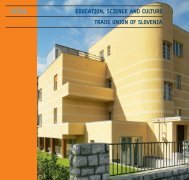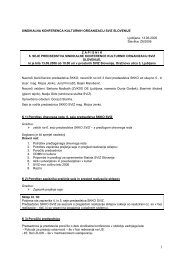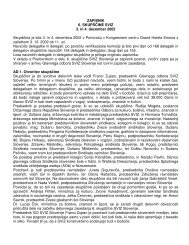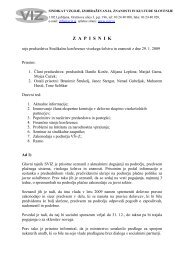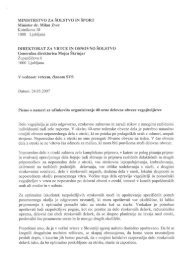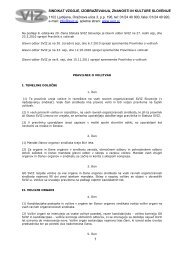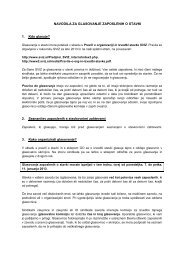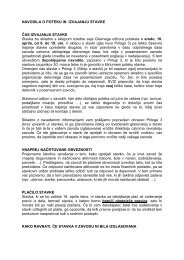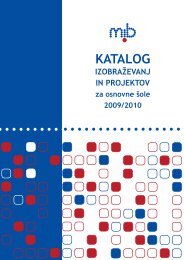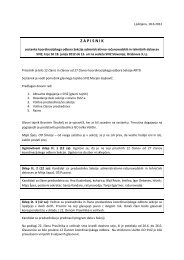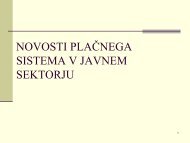You also want an ePaper? Increase the reach of your titles
YUMPU automatically turns print PDFs into web optimized ePapers that Google loves.
y his own opera company. Soon competing companies arose in the royal<br />
city, and after changes in the political and intellectual climate the epoch of<br />
opera began to gradually fade. Thus Handel sought shelter in composing<br />
oratorios. These were formally very similar to opera, as they were made up<br />
of solo numbers, recitatives and choruses, but they did not require the scenic<br />
realisation, which, of course, meant significantly reduced performance costs.<br />
At the beginning of 1751, the already greatly weakened master began to write<br />
his final oratorio – Jephtha. At the centre of the oratorio is the suffering of<br />
Jephtha, who has promised that for God’s help he will sacrifice the first person<br />
he comes across in front of his doorstep. Before Jephtha steps his daughter,<br />
whom Handel portrays with the most gentle tones. The extraordinary depth<br />
and religious devotion that radiate from Handel’s oratorio most likely reflect<br />
a presentiment of the composer’s own approaching death.<br />
England had to wait a long time for a new musical ‘giant’; it was not until<br />
the 20 th century that such a figure arrived, in the form of Benjamin Britten.<br />
Britten returned from USA in 1942 and finally settled down in England. Realising<br />
that as a symphonic composer it would be difficult to compete with the<br />
great master of the symphony, Vaughan Williams, he decided to dedicate<br />
himself to opera. Very soon he commenced writing the opera Peter Grimes,<br />
during which time, almost as a kind of break, he also wrote the Serenade for<br />
tenor, horn and strings. To a large extent, two excellent young musicians were<br />
‘responsible’ for the emergence of this work: horn player Dennis Brain and<br />
Britten’s life partner, tenor Peter Pears, who was also the first Peter Grimes.<br />
We can almost understand the Serenade as a kind of anthology of English<br />
poetry written on the theme of the night. However, the composer made<br />
use above all of the dramatic potential of the individual poems, which he<br />
deployed in an extremely efficient way in terms of drama. To a large extent,<br />
the work is marked by the sound of the horn, which is the bearer of its ‘romantic’<br />
connotations. The introductory ‘Pastoral’ really does lead us to the<br />
world of romantic nature, in the ‘Nocturne’ we hear the sequences of thirds so<br />
characteristic of the horn, the ‘Elegy’ is built around melancholy semitones,<br />
the ‘Dirge’ is conceived as a gradually building ostinato, while it seems that<br />
the ‘Hymn’, with its melodic ornamentation, is almost conceived in baroque<br />
terms. In the last song the horn is ‘silent’, but it returns in the solo ‘Epilogue’,<br />
which the performer plays from a distance. This movement is identical to<br />
the ‘Prologue’, and in it we can find one more link with nature: the composer<br />
specifies that the performer must play all of the tones with the aid of natural<br />
harmonics and not with the valves of the horn, which introduces certain<br />
specific colours in terms of intonation.<br />
PROGRAM / PROGRAM<br />
Something of the structural logic that determines Britten’s Serenade can<br />
also be found in the sixth movement of Messiaen’s extensive work From<br />
the Canyon to the Stars, written for a small orchestral ensemble in which<br />
numerous diverse and exotic percussion instruments take a leading role.<br />
Messiaen composed this work between 1971 and 1974 on a commission from<br />
the American society ‘Musica Aeterna’. The main inspiration for the work was,<br />
131



